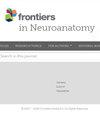Evaluation of the neuroprotective efficacy of the gramine derivative ITH12657 against NMDA-induced excitotoxicity in the rat retina
IF 2.1
4区 医学
Q1 ANATOMY & MORPHOLOGY
引用次数: 0
Abstract
PurposeThe aim of this study was to investigate, the neuroprotective effects of a new Gramine derivative named: ITH12657, in a model of retinal excitotoxicity induced by intravitreal injection of NMDA.MethodsAdult Sprague Dawley rats received an intravitreal injection of 100 mM NMDA in their left eye and were treated daily with subcutaneous injections of ITH12657 or vehicle. The best dose–response, therapeutic window study, and optimal treatment duration of ITH12657 were studied. Based on the best survival of Brn3a + RGCs obtained from the above-mentioned studies, the protective effects of ITH12657 were studied评估禾本科衍生物 ITH12657 对大鼠视网膜 NMDA 诱导的兴奋毒性的神经保护功效
目的 本研究旨在探讨一种名为 ITH12657 的新型禾本科衍生物在 NMDA 玻璃体内注射诱导的视网膜兴奋性毒性模型中的神经保护作用:方法成年 Sprague Dawley 大鼠左眼接受 100 mM NMDA 玻璃体内注射,每天皮下注射 ITH12657 或药物治疗。研究了 ITH12657 的最佳剂量反应、治疗窗口研究和最佳治疗时间。根据上述研究得出的 Brn3a + RGCs 的最佳存活率,研究了 ITH12657 在体内(视网膜厚度和全视场视网膜电图)和体外(通过量化 Brn3a + RGCs、αRGCs 及其亚型 α-ONsRGCs、α-ONtRGCs 和 α-OFFRGCs)的保护作用。结果在注射 NMDA 前 12 小时开始给药 10 mg/kg ITH12657 并连续给药 3 天后,Brn3a + RGCs 对 NMDA 诱导的兴奋毒性的保护效果最为显著。在体内,经 ITH12657 处理的大鼠在 NMDA 诱导的视网膜兴奋毒性面前表现出明显的视网膜厚度保护和功能保护。体内外结果显示,ITH12657 能显著保护 Brn3a + RGC、αRGC 和 αONs-RGC 群体免受 NMDA 诱导的兴奋毒性,但不能保护 αOFF-RGC 群体免受 NMDA 诱导的兴奋毒性,而 α-ONtRGC 群体则能完全抵抗 NMDA 诱导的兴奋毒性。结论在NMDA诱导的视网膜损伤前12小时开始皮下注射10毫克/千克的ITH12657,并持续3天,能最好地保护Brn3a + RGC、αRGC和αONs-RGC免受兴奋毒性诱导的RGC死亡。αOFF-RGCs群体对NMDA诱导的兴奋毒性极为敏感,而α-ONtRGCs则完全耐受NMDA诱导的兴奋毒性。
本文章由计算机程序翻译,如有差异,请以英文原文为准。
求助全文
约1分钟内获得全文
求助全文
来源期刊

Frontiers in Neuroanatomy
ANATOMY & MORPHOLOGY-NEUROSCIENCES
CiteScore
4.70
自引率
3.40%
发文量
122
审稿时长
>12 weeks
期刊介绍:
Frontiers in Neuroanatomy publishes rigorously peer-reviewed research revealing important aspects of the anatomical organization of all nervous systems across all species. Specialty Chief Editor Javier DeFelipe at the Cajal Institute (CSIC) is supported by an outstanding Editorial Board of international experts. This multidisciplinary open-access journal is at the forefront of disseminating and communicating scientific knowledge and impactful discoveries to researchers, academics, clinicians and the public worldwide.
 求助内容:
求助内容: 应助结果提醒方式:
应助结果提醒方式:


